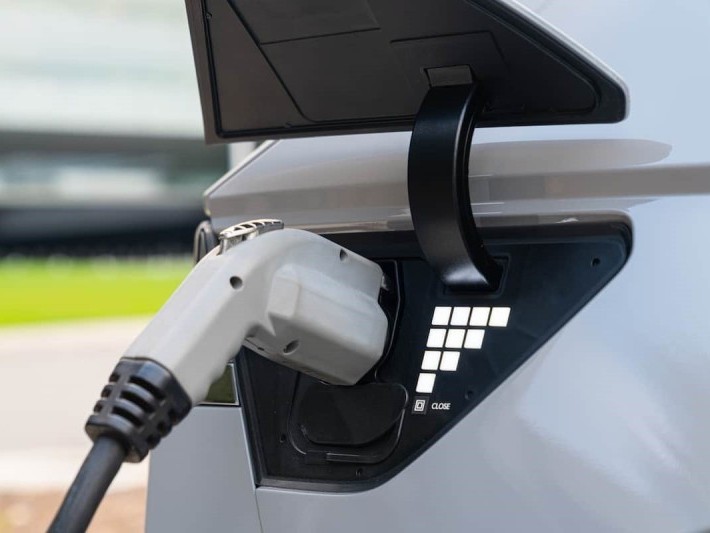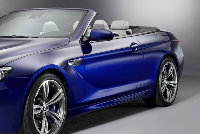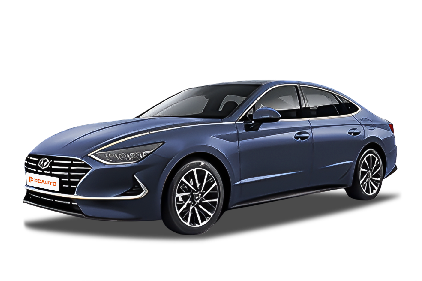Q
Does Hyundai Sonata have high fuel efficiency?
The fuel efficiency performance of Hyundai Sonata depends on the specific engine model and driving mode. Take the 2.0L naturally aspirated version, which is relatively common in Malaysia at present, as an example. Its official fuel consumption is approximately between 6.5 - 7.5L/100km on highways and 8.5 - 9.5L/100km in urban areas. The combined fuel consumption is around 7.5 - 8.5L/100km. Overall, its fuel economy is just average, which is slightly inferior to Japanese sedans in the same class (such as the Toyota Camry or Honda Accord), but still within a reasonable range.
If it's the newer 1.6T turbocharged version (available in some markets), the combined fuel consumption could be optimized to 6.8 - 7.5L/100km, making it more suitable for drivers with higher requirements for fuel efficiency. In recent years, Hyundai has also been promoting the hybrid version of the Sonata (like the Sonata Hybrid). For this type of vehicle, the fuel consumption can be as low as 5 - 5.5L/100km when driving in urban areas, which is more suitable for users who often encounter traffic jams.
The actual fuel consumption is also affected by driving habits, road conditions, and maintenance status. Regularly changing the engine oil and maintaining proper tire pressure can help optimize fuel efficiency. Generally speaking, the Hyundai Sonata isn't the most fuel - efficient model in its class, but its fuel economy can still meet the daily needs of most families.
Special Disclaimer: This content is published by users and does not represent the views or position of PCauto.
Related Q&A
Q
When to change transmission fluid 2020 Hyundai Sonata?
For the 2020 Hyundai Sonata's transmission fluid change interval, stick to the official maintenance manual's recommendation: every 60,000 to 80,000 km or 4-5 years, whichever comes first. Adjust based on driving conditions—if you’re often stuck in traffic or do frequent short trips, consider shortening it to 40,000-50,000 km to protect the transmission.
The Sonata’s automatic transmission is picky about fluid cleanliness, so always use the specified SP-IV or equivalent fluid for peak performance. If you notice rough shifts, delays, or weird noises, get the fluid checked ASAP.
Remember, this fluid isn’t just for lubrication—it handles hydraulic pressure and cooling too. Skipping changes can lead to oxidation, debris buildup, and even damage to sensitive parts like the valve body. That’s why regular maintenance is a must.
Pro tip: Swap the filter (if equipped) and opt for a flush with specialized equipment to ensure a thorough job. Since transmission specs can vary by model year, double-check with a Hyundai service center before buying parts.
Q
What is the factory warranty on a 2020 Hyundai Sonata?
The 2020 Hyundai Sonata typically comes with a factory warranty of 5 years or 100,000 kilometers (whichever comes first), covering manufacturing defects and material flaws. The powertrain may even have extended coverage—though it's always best to check with your local dealer for the latest terms.
Honestly, Hyundai’s warranty is one of the more competitive in the industry, especially compared to Japanese rivals. The longer coverage shows the brand’s confidence in its build quality and helps owners save on maintenance down the road. Plus, they throw in 24/7 roadside assistance, which is a lifesaver in emergencies.
Just keep in mind: normal wear-and-tear items like tires and brake pads aren’t covered. And to keep the warranty valid, you’ll need to stick to the service schedule at authorized centers. My advice? Read the warranty booklet carefully when you buy the car and hold onto all service records—it’ll save you headaches later.
Q
Are there any recalls on a 2020 Hyundai Sonata?
Regarding the recall information of the 2020 Hyundai Sonata, this model has been recalled multiple times worldwide due to potential safety hazards, including fuel pump module failure that may cause engine stalling during driving, welding defects in seat belt pre tensioners that affect protection effectiveness, and software logic errors in the intelligent cruise control system that may cause unexpected acceleration. Car owners can check the specific recall status on the brand's official website by entering the vehicle identification number (VIN). It is worth noting that modern cars usually notify affected car owners through registered mail or text messages. It is recommended to regularly check if contact information is updated to ensure timely receipt of notifications. For second-hand car buyers, they can confirm whether the recall project has been completed by checking the vehicle maintenance records. Unfinished recall services can be handled free of charge at authorized service centers. If any malfunction lights or abnormal situations are found on the dashboard during daily driving, it is necessary to contact after-sales inspection as soon as possible. This proactive recall mechanism reflects the manufacturer's emphasis on safety responsibility and is also a common quality improvement method in the automotive industry.
Q
What is the transmission problem on a 2020 Hyundai Sonata?
The 2020 Hyundai Sonata's transmission issues primarily involve its 7-speed dual-clutch transmission (DCT). Some owners report occasional jerky or delayed shifts during low-speed driving, which typically relates to either the transmission control module (TCM) software calibration or clutch break-in period. Hyundai has released technical updates for certain vehicles to improve shift smoothness.
It's worth noting that DCTs often exhibit these behaviors in stop-and-go traffic—this isn't unique to the Sonata. Many brands' dual-clutch systems require an adaptation phase early on. However, if you encounter severe symptoms like grinding noises or failure to engage gears, visit a dealership immediately, as these may indicate hydraulic or sensor failures.
Regular maintenance is key: always use the specified transmission fluid, especially in hot climates where heat can accelerate fluid breakdown. For used-car shoppers, get a professional inspection to check transmission health and verify any open recalls. Hyundai's been relatively flexible with transmission warranties lately—some out-of-coverage cases have even received goodwill repairs.
Q
What is the safety rating of the 2020 Sonata?
The 2020 Hyundai Sonata delivers outstanding safety performance, earning the "Top Safety Pick+" rating from the IIHS (Insurance Institute for Highway Safety) and a five-star overall safety score in NHTSA (National Highway Traffic Safety Administration) tests. Its standard Hyundai SmartSense suite includes forward collision warning, automatic emergency braking, lane keeping assist, and adaptive cruise control. Higher trims add advanced features like blind-spot monitoring and rear cross-traffic alert.
What’s worth mentioning is its high-strength steel body structure, which significantly improves crash protection. If safety is a top priority for you, it’s helpful to look into the testing standards of IIHS and NHTSA—they focus on different crash scenarios. For example, IIHS’s passenger-side small overlap front test is particularly rigorous.
With advancing technology, many new cars now come with even more advanced safety systems, like pedestrian and cyclist detection, which could also be a factor in your decision-making.
Q
Is there a recall on the 2020 Hyundai Sonata?
Regarding the recall information of the 2020 Hyundai Sonata, this model has indeed issued recall notices in multiple markets worldwide due to potential safety issues, including electric parking brake system modules that may experience short circuits, the risk of stalling during driving due to fuel pump failures, and the possibility of damage to connecting rod bearings due to insufficient rust prevention technology in some vehicles. It is recommended that car owners check the specific recall status on the brand's official website or authorized service center through the vehicle identification number. Modern cars usually notify affected car owners through registered mail or text messages, and provide free maintenance services. Even if they do not receive notification, they can actively schedule a test. For second-hand car buyers, they can check whether the relevant recall and repair have been completed through the repair records. It is worth noting that regular attention to recall information is an important part of vehicle maintenance, and hidden dangers such as electronic or fuel systems occasionally occur in other brand models. Keeping an eye on manufacturer announcements can effectively improve driving safety. The simplest way to confirm whether your car is within the recall scope is to bring the car key to a nearby dealer for quick inquiry.while avoiding robotic phrasing.)
Q
What is the fuel consumption of Hyundai Sonata 2020?
The 2020 Hyundai Sonata's fuel efficiency varies depending on engine configuration and driving conditions. The 2.5L naturally aspirated four-cylinder engine delivers a combined fuel consumption of approximately 7.8–8.1L/100km, while the more economical 1.6L turbocharged version averages around 6.7–7.2L/100km. Real-world figures may differ based on road conditions, driving habits, and maintenance status.
Featuring Hyundai's Smartstream technology, the Sonata optimizes combustion efficiency and reduces friction to improve fuel economy. It also offers selectable drive modes, with Eco mode further enhancing efficiency. For more accurate estimates, check owner forums or test-drive the vehicle yourself.
While hybrid models typically offer better mileage, the 2020 Sonata didn't introduce a hybrid variant in this market. To maximize efficiency, maintain smooth acceleration, proper tire pressure, and regular servicing—including air filter and spark plug replacements—to keep fuel consumption in check.
Q
Does a 2020 Hyundai Sonata have a turbo?
The 2020 Hyundai Sonata does offer a turbocharged engine option – a 1.6-liter turbocharged four-cylinder that delivers 180 horsepower and 265 Nm of torque, paired with an 8-speed automatic transmission. This powertrain strikes a nice balance between fuel efficiency and driving excitement, making it a solid choice for performance-minded buyers.
For those who prefer something different, there's also a 2.5-liter naturally aspirated engine available. Hyundai's engine tech is well-refined, and the turbocharging here does a great job of boosting power output from the smaller displacement while keeping fuel consumption in check—whether you're navigating city streets or cruising on the highway.
Just remember, turbo engines need a bit more attention when it comes to maintenance, especially oil changes and cooling system care, to ensure they stay reliable in the long run. As a midsize sedan, the Sonata delivers a comfortable ride and decent handling, working well for both family trips and daily commutes.
Q
What are common problems with the 2020 Sonata?
The 2020 Sonata delivers solid overall reliability, but there are a few common issues worth noting. Some owners report premature 12V battery drain—particularly with frequent use of the smart key's remote start feature. We'd recommend periodic battery health checks to avoid being stranded.
Another watch-out is the sunroof; a handful of drivers experienced rattles or clogged drainage channels after prolonged use, especially in rainy regions. Regular cleaning of the tracks and drainage holes helps prevent this.
While the smart cruise control works well in most scenarios, it can occasionally misread complex road situations, so staying alert is still crucial. Maintenance-wise, parts availability is good, and service costs are mid-pack for the segment.
Hyundai's made noticeable NVH improvements—the 2020 Sonata's cabin is significantly quieter than its predecessor. That said, some owners note pronounced tire noise at highway speeds; swapping to premium tires could help.
Bottom line: Stick to the scheduled maintenance, and this sedan should treat you right.
Q
What generation is the 2020 Hyundai Sonata?
The 2020 Hyundai Sonata represents the eighth generation of this model, which first debuted in 2019. It adopts Hyundai's latest "Sensuous Sportiness" design language, featuring a more dynamic and stylish look—think the signature full-width LED daytime running lights and a sleek fastback silhouette.
Built on Hyundai's all-new third-generation platform, the eighth-gen Sonata boasts improved body rigidity while shedding weight, enhancing both handling and safety. Under the hood, buyers can choose from multiple engine options depending on the market, including a 2.0L naturally aspirated, a 1.6L turbocharged, and a 2.5L naturally aspirated unit, with some variants even offering a hybrid powertrain.
Inside, the cabin gets a cleaner, more tech-forward design with a fully digital instrument cluster and a large touchscreen infotainment system supporting Apple CarPlay and Android Auto. This generation also introduces advanced driver-assistance features like Highway Driving Assist and Remote Smart Parking Assist.
Space is another area where the Sonata improves, thanks to a longer wheelbase that liberates extra rear legroom. The trunk offers 462 liters of cargo space, making it a practical choice. As Hyundai's flagship midsize sedan, the Sonata has always been praised for its value and well-rounded performance—and with its design and tech upgrades, the eighth-gen model only sharpens its competitive edge.
Popular Cars
Model Year
Car Compare
Car Photo
Latest Q&A
Q
How much does it cost to buy a 2024 Tesla Model 3?
The 2024 Tesla Model 3 starts at around RM 175,000, but the final price depends on your chosen configuration and add-ons. Opt for the Long Range or Performance version, and you’re looking at a higher tag.
As Tesla’s entry-level model, it packs cutting-edge EV tech, including 500+ km of range on a single charge and standard Autopilot for both daily commutes and road trips. Just keep in mind extra costs like insurance, registration, and potential home charger installation.
Tesla’s Supercharger network is expanding locally, with solid coverage in major cities, making charging hassle-free. Maintenance costs? Typically lower than gas cars—no oil changes, fewer moving parts—so long-term savings add up.
If you’re after more thrills, the Performance variant hits 0-100 km/h in roughly 3 seconds. Plus, government EV tax perks help soften the upfront cost.
Q
How reliable is the 2024 Model 3?
The 2024 Model 3 delivers solid reliability, thanks to Tesla’s continuous software updates and hardware refinements. Key areas like the battery management system and Autopilot have seen multiple optimizations, leading to a noticeable drop in failure rates.
This model features a stiffer body structure and an improved suspension setup, offering a smoother ride. Upgraded interior materials also help reduce cabin rattles—a common gripe with earlier builds.
EV maintenance costs remain low (no oil changes, etc.), though it’s wise to periodically check battery health and charging components for long-term performance. For shoppers eyeing EVs, charging infrastructure and home charging options matter—thankfully, public chargers are expanding fast, making daily use more convenient.
If you frequently road-trip, planning charging stops ahead helps. While the range easily handles daily drives, a little route prep goes a long way in maximizing the experience.
Q
What is the battery range of the Tesla Model 3 2025?
The battery range of Tesla Model 3 2025 is expected to be optimized based on existing models, and specific data needs to be released officially. However, referring to the EPA range of the 2024 rear wheel drive version, which is about 438 kilometers, and the high-performance version, which is about 513 kilometers, the 2025 model may further improve, especially in terms of battery technology or energy efficiency management. For electric vehicles, the range is greatly affected by driving habits, road conditions, and climate. Air conditioning may slightly reduce the range in hot weather, but the battery thermal management system can usually maintain stable performance. In terms of charging, Model 3 supports super fast charging, which can replenish about 250 kilometers of range in about 15 minutes, while home charging stations require 6-8 hours to fully charge. Daily commuting or long-distance travel are practical enough, it is recommended to follow Tesla's official website or local showroom for the latest information.
Q
Is the 2024 Model 3 worth the price?
The 2024 Model 3 strikes an impressive balance between price and performance. Its upgraded range, more refined interior, and enhanced autonomous driving features genuinely boost its competitiveness—especially for tech-savvy, eco-conscious buyers.
Tesla optimized the battery efficiency this time around, making it suitable for both daily commutes and longer trips, while the handling stays true to the brand’s signature responsiveness. If your budget allows and you’re open to EVs, this one’s worth considering—though a test drive is wise to see if it matches your driving style.
That said, local charging access matters. While public chargers are becoming more common, home installation costs should factor into your budget. Alternatives in this price range exist, so cross-shop specs and service policies (like warranty coverage or charging network support) to make a well-rounded decision.
Q
How many miles does a 2024 Tesla Model 3 get?
The 2024 Tesla Model 3 offers varying range figures depending on configuration. The rear-wheel-drive (RWD) version delivers an EPA-estimated 272 miles (approx. 438 km), while the all-wheel-drive Long Range model pushes that to around 341 miles (roughly 549 km). Real-world range may vary slightly based on driving style, road conditions, and climate.
As a pure EV, the Model 3 achieves this efficiency thanks to its advanced battery management system and lightweight design. It also supports fast charging—at a Tesla Supercharger, you can add up to 200 km of range in about 15 minutes. Whether for daily commutes or longer trips, that’s more than enough for most drivers, especially with charging infrastructure becoming more widespread.
If you need to maximize range, tweaking your driving mode or using the car’s built-in energy optimization features can help squeeze out even more miles.
View MoreRelated News

2026 Toyota HiLux receives five-star ANCAP safety rating in ANCAP
MichaelDec 12, 2025

In Malaysia, which sliding door MPVs are available?
MichaelOct 30, 2025

Modern Ioniq 5 N Lands in Malaysia: Track-Level Performance Electric Vehicle is Here, Priced Possibly Below RM 400,000?
JohnSep 10, 2025

Hyundai's Big Return to Malaysia: Top 5 Models Expected
MichaelMay 30, 2025

580,000 km & 87.7% Battery Health: Ioniq 5’s Incredible Durability
MichaelMay 6, 2025
View More


















Pros
Cons